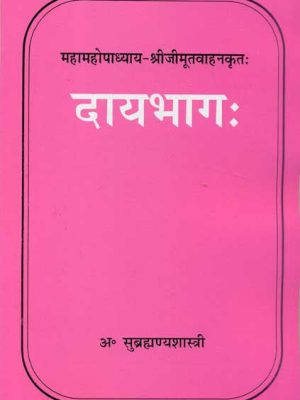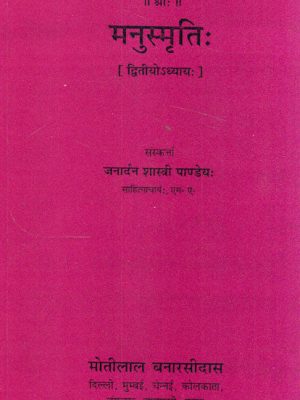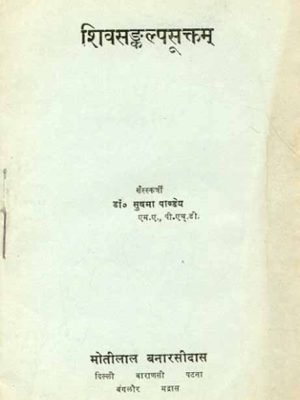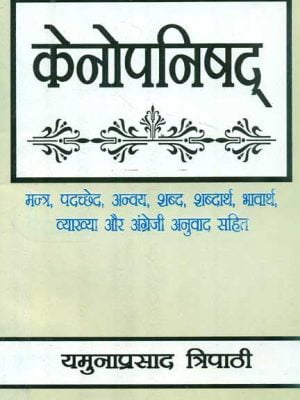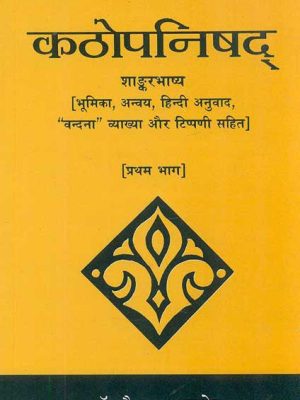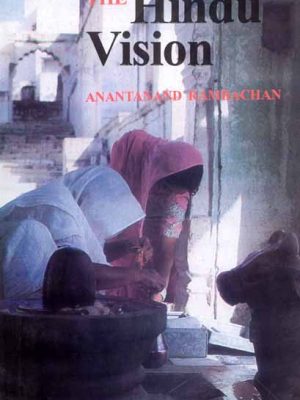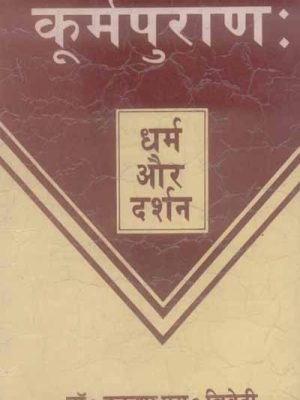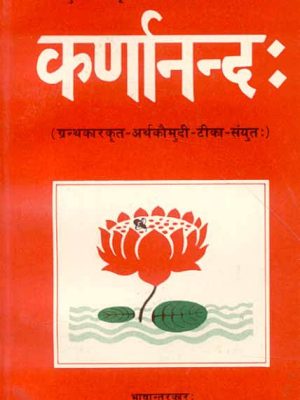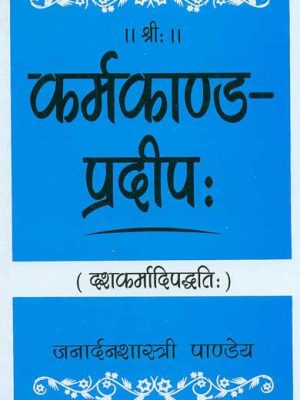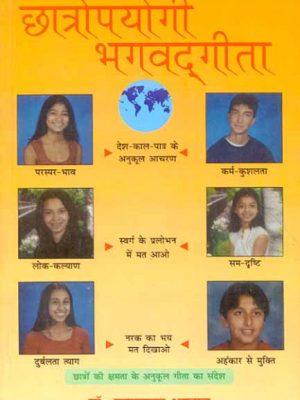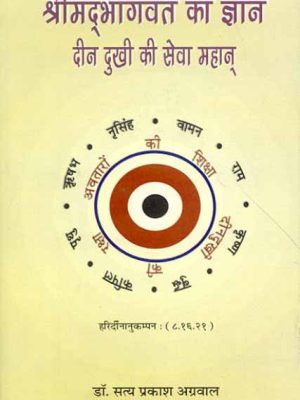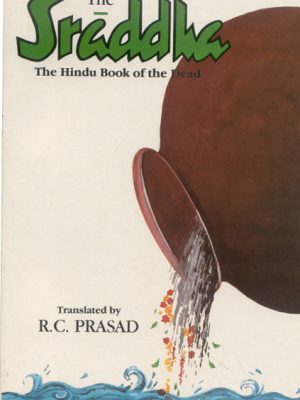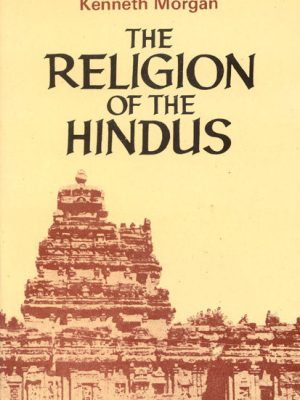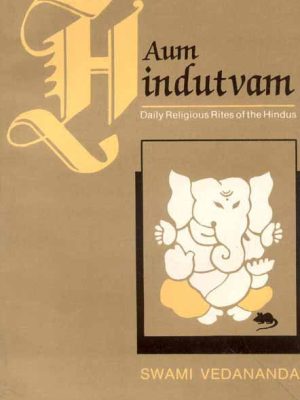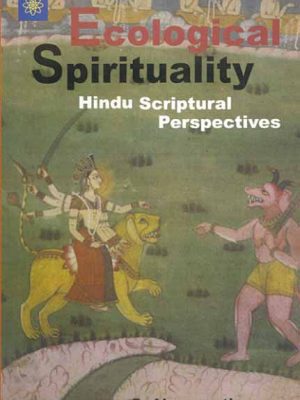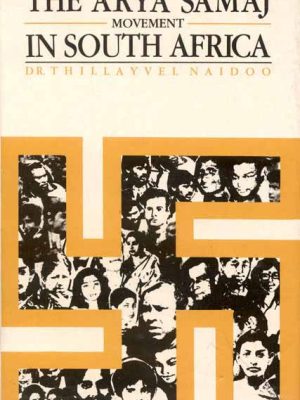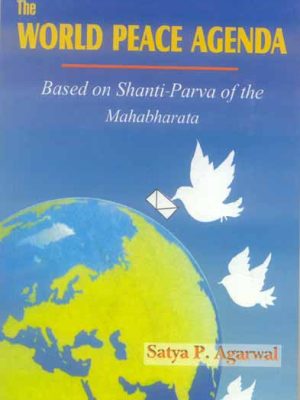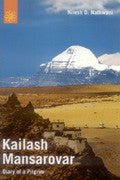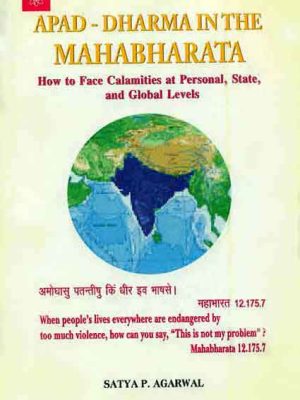Hinduism and Its Sources
-
Daay Bhag: Mahamahopadhyay-Shriji Mootwahankrit:
Daay Bhag: Mahamahopadhyay-Shriji Mootwahankrit:
Daay Bhag: Mahamahopadhyay-Shriji Mootwahankrit
About the Author(s)
A. Subrahmanya Shastri
₹75.00 -
Manusmriti (Dwitiya Adhyaya)
Manusmriti (Dwitiya Adhyaya)
₹100.00Manusmriti (Dwitiya Adhyaya)
₹100.00 -
Harishchandropakhyanam: Athva Shunah Sheshopakhyanam
Harishchandropakhyanam: Athva Shunah Sheshopakhyanam
Harishchandropakhyanam: Athva Shunah Sheshopakhyanam
Author
Sushma Pandey
₹100.00 -
-
Kenopanishad: Mantra, Padachched, Anvaya, Shabd, Shabdarth, Bhavarth, Vyakhya aur Angreji anuvad sahit
Kenopanishad: Mantra, Padachched, Anvaya, Shabd, Shabdarth, Bhavarth, Vyakhya aur Angreji anuvad sahit
Author
Yamuna Prasad Tripathi
₹100.00 -
Kathopanishad (Pratham Bhag): Shankar Bhashya [Bhumika, Anvaya, Hindi Anuvad, “Vandna” Vyakhya aur Tippani Sahit
Kathopanishad (Pratham Bhag): Shankar Bhashya [Bhumika, Anvaya, Hindi Anuvad, “Vandna” Vyakhya aur Tippani Sahit
Author
Baijnath Pandey
₹100.00 -
The Hindu Vision
The Hindu Vision
This is a discerning and lucid articulation of Hindu belief and practice. Professor Rambachan combines insight born out of his own devotion with mastery of relevant texts and traditions to create a gem of a book. He describes worship in its familial and temple contexts, holding before the reader the aim of worship as unbroken awareness of God in all of life. This awareness intensifies and expands the religious and moral meaning of life, death, and human action, Dharma, moksa and rebirth, and other classical Hindu teachings, are set forth with an elegance of style and economy of words. Rambachan is especially attentive to common misunderstandings of Hindu teachings. He shows how Hinduism avoids determinism, encourages freedom from ignorance and for joyful celebration of life, and issues forth in compassionate concern for others. The final chapter, ‘A Hindu Looks at Jesus’, will be of special value for Hindu-Christian dialogue. It is difficult to imagine a more accessible, concise and helpful introduction to the profound themes of Hinduism.
About the Author(s)
ANANTANAND RAMBACHAN
₹100.00The Hindu Vision
₹100.00 -
-
Karnananda-Krishnachandra Goswami Pranit: (Granthkarkrit-Arthkaumudi-Tika-Sanyukth)
Karnananda-Krishnachandra Goswami Pranit: (Granthkarkrit-Arthkaumudi-Tika-Sanyukth)
Karnananda-Krishnachandra Goswami Pranit’s book summary is as follows: (Granthkarkrit-Arthkaumudi-Tika-Sanyukth) We may learn much from their spiritual culture, which was not only a major factor in shaping the Western world’s history, but which still has a lot to offer us in the present day. The Rig-complex Veda’s symbols, metaphors, and tales codify India’s archaic spirituality, which is proved to be considerably older than has been traditionally supposed by academics. A fascinating mathematical and astronomical code hidden in the Vedic hymns is also revealed in this book. This well-researched and cross-cultural work will fascinate and enhance anyone interested in ancient cultural history, India, archaeoastronomy, or spirituality. It is fascinating.
Author
Hitanand Goswami
₹150.00 -
Karmakand-Pradeep: Dashakarmadipaddhti
Karmakand-Pradeep: Dashakarmadipaddhti
₹175.00 -
-
Shrimadbhagavat Ka Gyan, Deen Dukhi ki Seva Mahaan
Shrimadbhagavat Ka Gyan, Deen Dukhi ki Seva Mahaan
₹195.00 -
The Sraddha: The Hindu Book of the Dead (A Treatise on the Sraddha Ceremonies)
The Sraddha: The Hindu Book of the Dead (A Treatise on the Sraddha Ceremonies)
Of the sixteen samskaras which encompass a Hindu life the last one is performed for the dead by their sons or grandsons or relatives. Many passages in the Puranas and Dharmasastras extol the role of the son in the life of devout Hindu. The present book deals with the rite of Sraddha and vindicates the popular belief that Sraddha, being an important topic, forms an integral part of Hindu Dharmasastra. The belief in the after-death survival of deceased ancestors and their separate world belongs to the Indo-Iranian period and as such is pre-Vedic. Ancestor-worship for one’s prosperity, continuation of one’s race, is as old as the Rgveda. Preface, Introduction, The Antyesti Samskara, Appendices, Glossary.
₹195.00 -
-
Aum Hindutvam: Daily Religious Rites of the Hindus
Aum Hindutvam: Daily Religious Rites of the Hindus
The author negates some of the very old concepts, viz., that females and
Shudras, and people who have not undergone the Upanayana Samskaras have no
access to Vedas or they should not perform Vedic rituals. He insists that
‘all religious observances of a man, if devoid of right conduct, are of no
avail. Right conduct constitutes an important element of education and
civilization. In his opinion Hindus will have to develop the
all-comprehensive idea of Hindu Dharma in and through their lives and
activities. Their welfare lies in the Vedic prayers and practices.
Those who are interested in Hindu Dharma, and those who want to know about
its rituals will find the present work indispensable. The author deals with
the religious practices, observances and rituals. When, how, and where
certain rituals are to be performed, is clearly discussed. Benefits of
Divine Communion are given special emphasis.
About the Author(s)
SWAMI VEDANANDA
₹195.00 -
Ecological Spirituality: Hindu Scriptural Perspectives
Ecological Spirituality: Hindu Scriptural Perspectives
Every major step man takes wreaks its own damage on the environment. Aware of this, man is yet unwilling to forgo the immediate material benefits his actions give. for all his professions of concern aabout the environment, in reality his concern reduces to nothing more than cosmetic changes in the exterior which are of no value. This celender monograph is critique on this pervasive culture of ambivalence. The author resorts to the first principles, Sanatana Dharmawhich literally means eternal order. Not environmental engineering but ecological spirituality is the answer. In Fact this is the only religion the world needs.
About the Author(s)
G. Naganathan
₹200.00 -
Arya Samaj Movement in South Africa
Arya Samaj Movement in South Africa
Even though it is primarily a religious organisation, the Arya Samaj movement emerged as a significant player in India’s fight for social and cultural autonomy, which involved both religious and secular groups. It was established in 1875, foreshadowing the establishment of an independent India in 1947. This work makes no attempt to provide a detailed
investigation of the movement, but also presents a summary of its development and philosophy in the context of the contributions made by its founder, Swami Dayanand Sarasvati. There is a lot of reason to be proud of the Samaj’s complex of institutions and upliftment programmes that they started, as well as the major historical forces that played a role in shaping the movement.
The nineteenth century saw the beginning of a number of different socio-religious groups, one of which was the Arya Samaj. Despite this, it was responsible for the construction of many of the most prestigious educational institutions in northern India. Indian groups who had immigrated to other countries, such as Mauritius, South Africa, and Guyana, were among the first to feel the impact of these events. What was once a little religious group has now grown into a religious denomination that has significant weight in the world today. One of the Arya Pratinidhi Sabhas may be found in South Africa.
the most well-known Hindu organisations that have a significant amount of sway over the north Indian subset of the Hindu people.
Author
T. Naidoo
About the Author
Originally from Johannesburg, South Africa, Dr. Thillayvel Naidoo went to school and graduated as a teacher. A graduate of the University of South Africa, he moved to India to pursue his M.A. in Indian Philosophy at the University of Madras. Research Officer at the University of Durban-Department Westville’s of Science of Religion. He is presently a professor of Philosophy of Religion at the university where he earned his doctorate. On Hinduism, he is the author of many publications on the subject: The Hindu Way, Sai Baba: An Analysis of Manifestations, The Parsee Community in South Africa, and Tamil People in South Africa.
₹200.00 -
The World Peace Agenda: Based on Shanti-Parva of the Mahabharata
The World Peace Agenda: Based on Shanti-Parva of the Mahabharata
This book presents Shanti-Parva’s peace-messages for consideration by everyone else. With the hope that plenty of purposeful discussion (with an open mind) will be held, to arrive at new proposals which can help bring world peace within the reach of humankind in the twenty-first century. Readers will discover that the peace-promoting messages of Shanti-Parva (when suitably interpreted) have universal appeal even today. These messages envisage the launching of a new peace-initiative, based on the explicit declaration of the Mahabharata verse 12.94.1 that says “wars cannot provide a satisfactory solution to any dispute”, and incorporate several novel features which are summarized in the last chapter of this book.
₹225.00 -
Kailash Mansarovar: Diary of a Pilgrim
Kailash Mansarovar: Diary of a Pilgrim
This profusely illustrated travelogue is a tale about fancies and fears, adventures and aspirations, expectations and disillusions, escapes and retreats experienced by a team of adventurous pilgrims. This is a story of an unforgettable odyssey to the holy Mount Kailash and the sacred Mansarovar describing mysteries connected with the land capturing the intangible air of faith and pilgrimage. This travelogue takes us on a journey to the wild, seldom travelled northern route visiting the remote cities, towns and monsteries of mysterious Tibet. It is a gripping story of pilgrims who aspire to see Gods living in the wilderness of the remote holy land. This is an engrossing, touching and remarkable account of a picturesque travel with nice imagery describing majestic mountains, turquoise lakes and virgin rivers of Tibet. Written in a brilliant style, it is a dramatic record that succeeds in imparting onto the readers some of the intensely experienced emotions that will remain long in memory. This book has been included in the Tibetan Travel Classics, Pilgrims Publishing, Varanasi, India and Pilgrims Book House, Kathmandu, Nepal.
₹225.00 -
Apad-Dharma in the Mahabharata: How to Face Calamities at Personal, State, and Global Levels
Apad-Dharma in the Mahabharata: How to Face Calamities at Personal, State, and Global Levels
The literal meaning of the Sanskrit word “Apaddharma” is “dharma appropriate at the time of calamity”. The Mahabharata’s use of this expression implies that, in the opinion of the author of this epic, the traditional varnashramadharma would not prove to be strong enough to protect the society, if and when there is a calamity. Therefore, Vedic scholars ought to have welcomed the messages of Apad-dharma when the society was actually attacked by external forces during the premodern period.
The historical background of the present study poses an important, academic question: “How could the Indian society have protected itself against external attacks during the pre-modern period?” Research-based answers to such Indiarelated questions occupy the initial part of this book to which a global dimension has been added by digging deep into Mahabharata’s innumerable stories. Results of innovative investiga-tions into the general question “How to face calamities at personal, state and global levels”, are presented here in terms of a modern, scientific framework, and expressed in a non-denominational
terminology, relevant to the problems of the 21st century. Readers from all parts of the world can get a strong message of social responsibility from this book, and accordingly make their contribution to the cause of world peace.
₹225.00
